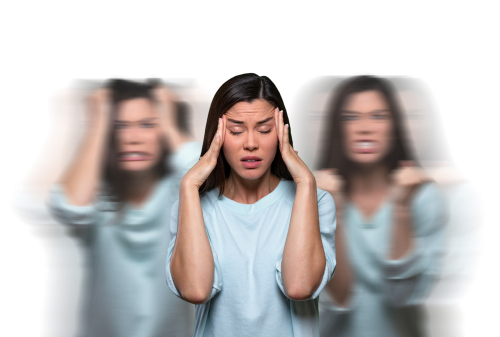
The connection between anxiety and infertility is complex and multifaceted. While anxiety itself is not a direct cause of infertility, research suggests that there is a bidirectional relationship between anxiety and fertility-related issues. Here are some ways in which anxiety can be linked to infertility:
- Stress Hormones and Reproductive Function:
- Chronic stress, including anxiety, can lead to the release of stress hormones such as cortisol. Elevated cortisol levels may disrupt the balance of reproductive hormones, potentially affecting the menstrual cycle, ovulation, and sperm production.
- Impact on Sexual Function:
- Anxiety can contribute to sexual dysfunction, including reduced libido and difficulties with arousal. These issues may affect a couple’s ability to conceive, especially if they are experiencing stress-related challenges in their intimate relationship.
- Disruption of Menstrual Cycles:
- High levels of stress and anxiety may lead to irregular menstrual cycles or even the absence of menstruation. This can make it more difficult for couples to predict fertile periods and time conception attempts accurately.
- Negative Impact on Fertility Treatments:
- Anxiety can affect the success of fertility treatments such as in vitro fertilization (IVF) or intrauterine insemination (IUI). Stress may impact the body’s response to fertility medications and the overall success rates of assisted reproductive technologies.
- Reduced Sexual Frequency:
- Couples experiencing anxiety, whether related to fertility concerns or other life stressors, may engage in less frequent sexual activity. This reduction in sexual frequency can decrease the chances of conception.
- Psychological Toll:
- Dealing with infertility can be emotionally and psychologically challenging. Anxiety related to fertility issues can contribute to feelings of sadness, frustration, and hopelessness. These emotional challenges can further exacerbate stress and potentially impact reproductive health.
- Coping Behaviors:
- Individuals experiencing fertility-related anxiety may adopt coping behaviors that can be detrimental to reproductive health, such as smoking, excessive alcohol consumption, or unhealthy eating habits.
- Mind-Body Connection:
- The mind-body connection plays a role in reproductive health. High levels of anxiety can contribute to muscle tension, altered immune function, and other physiological changes that may indirectly impact fertility.
It is important to note that while anxiety may contribute to fertility challenges, infertility itself can also lead to increased stress and anxiety. The journey of trying to conceive, undergoing fertility treatments, and dealing with the uncertainty of outcomes can be emotionally taxing. Seeking support from mental health professionals (e.g., therapists specializing in reproductive issues or fertility counselors) can be beneficial for individuals and couples navigating anxiety related to fertility. Additionally, incorporating stress-reducing techniques, such as mindfulness, relaxation exercises, and self-care, may help manage anxiety and support overall well-being during the fertility journey.
Treatment In Calabasas
Calabasas is a city in California. It is a well-known suburb of Los Angeles, located west of the San Fernando Valley and north of the Santa Monica Mountains. Over the past decade, the city of Calabasas has grown in its reputation for luxury as well as for privacy which makes it a hidden gem for residential living for society’s elite, and one of the most desirable destinations in Los Angeles County. It is also home to a plethora of highly qualified mental health clinicians providing an array of therapeutic services and treatment options.
The information above is provided for the use of informational purposes only. The above content is not to be substituted for professional advice, diagnosis, or treatment, as in no way is it intended as an attempt to practice medicine, give specific medical advice, including, without limitation, advice concerning the topic of mental health. As such, please do not use any material provided above to disregard professional advice or delay seeking treatment.









